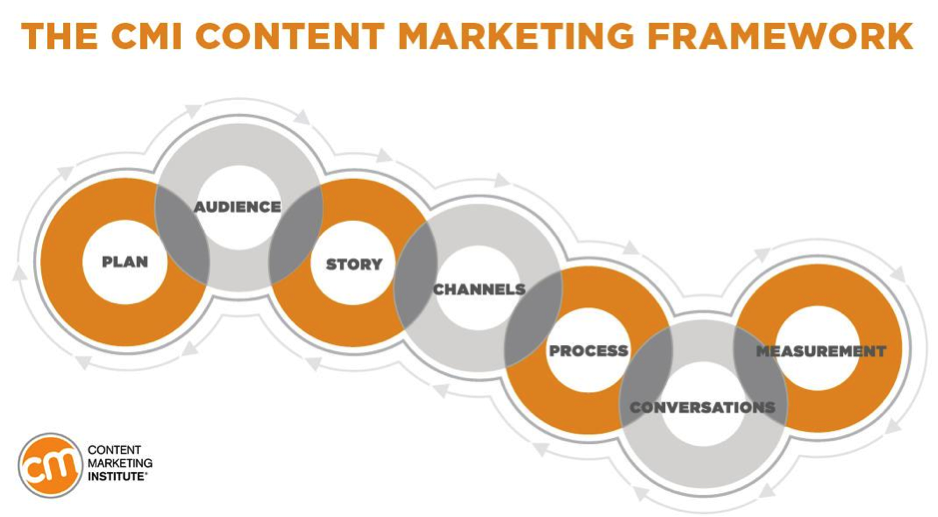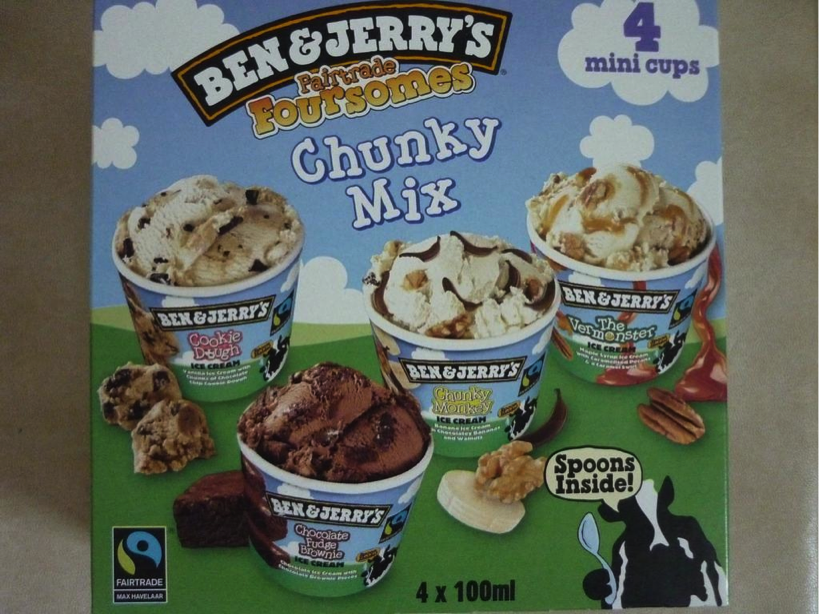If you’re looking to build a successful content marketing campaign, you need the right strategy in place.
- While the majority of content marketers now have a strategy, only 32% have their strategy fully documented.
- Without a concrete plan, your strategy can’t produce the best possible results.
Having a strategy isn’t the only step to making the most of your content marketing efforts.
- It’s important that the strategy you put into place is of a high quality, helping you to work towards effective goals by targeting your audience in the most efficient manner.
To build a content campaign that will produce the best results, you need to put the right building blocks in place.
The Content Marketing Institute recommends that every successful marketing framework should be built upon seven key building blocks:
- Plan
- Audience
- Story
- Channels
- Process
- Conversion
- Measurement.
This architecture will help your content marketing efforts not only to develop in the right direction, but will also ensure that it will have the foundation and structure necessary to ensure continued success as your campaign grows in stature.
Let’s have a look at these seven building blocks, and how creating the right framework for your content marketing campaign will help you to get the maximum benefit from your content.
Plan
Before you do anything else: long before you start generating ideas for content or considering how you’ll connect with your audience, you ought to have a plan in mind for what you’re looking to accomplish.
- In my experience, too many marketers rush into content marketing, expecting that good content will make money regardless of implementation.
- In reality, though, the content marketers that take the time to set goals and make plans are the ones who’ll find ways to get the most out of every piece of content.
In practice, your initial plans for your content strategy should revolve around goals.
Set clear, preferably metric-based goals that can be used to point your content in the right direction.
Ask what you’re looking to achieve with your content marketing:
- Do you want to increase traffic to your site?
- Build the reputation and authority of your brand?
- Generate more useful leads?
Depending on your goals, you’ll find your content developing in different directions, and you’ll end up using different distribution methods.
- For example, regular blog posts on your own site will draw in more traffic, but guest posts on other sites will develop a greater reputation for your brand.
For this reason, before you decide on what content to produce, plan out some goals and targets.
These targets should be ambitious but also achievable.
- Don’t worry if you don’t have a specific idea of how successful your campaign might be: there’ll be room to adjust targets later.
The best goal to focus on is generating sales and developing relationships with lifelong customers.
Set targets for these goals first, and then set other smaller goals, such as web traffic or lead generation, that help you to build towards creating customers.
Audience
Once your goals are set, you want to spend time learning about your ideal customers.
- It’s not smart to make assumptions about who’s buying your products, or what they’re looking for out of the content you produce.
- For this reason, you should go to the source and find out as much as you can about your customer base, the kinds of people who buy your products, and what their needs are.
If you already have an existing customer base, you should ask them about:
- What they use your product for
- How they first came across your company
- What their opinion of your company is, and how they feel you’re perceived online already
- What convinced them to make an initial purchase.
You should also ask:
- What content they regularly consume and enjoy online
- Which competitor brands they appreciate
- What they feel they’d like to see more of that’s not currently available.
If you don’t have an existing customer base, these same questions should be asked of people who frequent online communities relevant to your products.
You should also conduct significant competitor analysis, learning how your competition engages with their audience and what content marketing methods they use.
- The purpose of this research is to help you understand what you can borrow from your competitors’ approach, and also how you can make your content stand out as different and unique.
The research you do into your customers will influence the way you approach content marketing.
- For example, younger audiences prefer video content, while business customers are more likely to prefer white papers and infographics
Ideally, your research will inspire everything you do with your content, to make sure that your work is perfectly targeted to meet the needs of the people you’re looking to connect with.
Story
All content tells a story.
- Storytelling is the most effective form of learning as our brains are hardwired to remember narratives.
- When audiences take in your content, they’ll look through it to find patterns from which they can build a story.
For this reason, you want your brand’s story to be clear, defined, and match the audience that you’re talking to, helping you to meet your goals.
Think of Ben and Jerry’s ice cream.
- Everything from the company’s name to the inclusion of the founder’s picture on their cartons is designed to tell a story about the business’ grass-roots origins and family structure.
- This feeds the idea in the minds of customers that the products are made with love, using the best, fair trade ingredients.
You want to communicate a similar story through every piece of content that you produce.
- It doesn’t have to be overt or obvious, but you should subtly point audiences towards your brand story at all times.
So what is your story?
- A story should reflect your company’s practices, structure, and products.
- It should also speak to a subject that resonates with your key audience.
Depending on your story, you’ll want to take a different approach to the tone and style of your content:
- If your brand is aimed at a young audience, you’ll want your story to reflect themes of rebellion, freedom, and trying something fun, fresh, and different.
- If you’re reaching out to a more business audience, you want your story to reflect your dedication to professionalism, hard work, and delivering a quality service.
Find the story that works for your business, and use it as part of your framework to provide unique feel for your content.
Channels
At this point it’s time to decide the kind of content you’ll be producing, and the methods you’ll be using to circulate it online.
- These choices shouldn’t be made based on the content you want to make, but should instead focus on telling your story to the appropriate audience, in order to help you meet your goals.
Take the time to work out:
- Which forms of content will work best for your story and will resonate with your audience
- What places online your audience look for new content, and where you can publish your content to grab their attention.
Ideally, you should plan out how your various content channels will support and supplement each other:
- Find ways to use one piece of content to point to other pieces in different formats
- Look at methods to reuse content, such as turning text articles into videos or white papers.
At this point in your plan, if you haven’t already done so, you can also being to set budgets and create editorial plans for how to use your funds to create content.
Process
Effective and efficient content creation doesn’t happen by accident.
Nor can it be achieved without a clear and carefully organized structure to your content creation process.
In coming up with a plan for your content creation, you need to take into account:
- Timescales for producing each piece of content
- All tasks and responsibilities that are involved in producing work
- The amount of research and asset development
- Relative workloads for your content creation team.
Once you’ve taken stock of all the requirements for producing a piece of content, work out a plan for how to accomplish these steps that takes into account all of the project’s needs.
- This can include setting an editorial calendar to determine how frequently you’ll be producing content, and what deadlines you’ll need to set to keep your content creation plan on-track.
When setting deadlines, ensure that each smaller task that needs to be done has its own deadline – this will ensure that you won’t face delays towards the end of a project.
You’ll also want to create a clear division of work, especially if you have several people involved in content creation.
- Each team member should know exactly what their role is and what tasks they’re required to complete.
- Where possible, organize everyone’s schedules and workloads so that there’s no downtime as one team member is waiting for another one to finish the work they’ve been assigned.
Your process plan should take into account that things don’t always run smoothly, and should include contingency plans for when things go wrong, to allow a degree of flexibility without letting a piece of content linger in an unfinished state for too long.
The more comprehensive your plan is, the easier it will be to create high quality content on a consistent and frequent schedule.
Conversation
The ideal use of content marketing isn’t a one-way conversation.
As part of building your content campaign framework, you should look at creating dialogue avenues between you and your audience.
This is beneficial for many reasons:
- Talking regularly with your customers encourages them to build a relationship with your brand, leading to more sales
- Listening to what your audience is saying will help you to plan your content to better meet their needs
- Dealing quickly with concerns or customer service issues will help to build your company’s reputation as a brand that cares about their customers.
When planning what kind of communication methods will be used, typically we’re talking about social media.
You should plan out exactly how you’ll use social media to benefit your content:
- Which social media platforms are best for widespread distribution of your content
- Which platforms are best for interacting with customers, and listening to their opinions and thoughts.
Part of this step of building your campaign can involve identifying influencers in your area, and working out ways to build relationships with them.
This will help you in getting your content in front of the biggest possible audience and creating a healthy, helpful discussion around your content and your brand.
Measurement
The final building block that you can use to create a solid framework for your campaign is a method of measuring the success of your content.
- I spoke about the importance of setting goals when making a plan – if you’re not keeping a close eye on your progression towards these goals, you won’t know how well your content is performing.
Metrics-based goals and numbers that can be tracked in analytics tools are going to be the most useful when trying to get an idea of how your content is doing.
Ideally, you should be looking at the big picture to indicate how your content is performing: how have your sales figures changed since implementing your content campaign.
It’s also useful, though, to look at the smaller metrics that show how individual pieces of content are performing:
- Looking at numbers like site traffic and social media engagement will help you to know what content is doing well and what’s less useful
- This can help you to make decisions about future content creation.
Less numerical measurements are also useful: keep an eye on what your customers are saying about your content and what you can do to improve.
Brick By Brick
Content marketing works significantly better when you’ve got a solid blueprint to work from.
Make sure your plan is detailed and that there aren’t any gaps in your plan or vague areas where you’re not certain what your approach is.
Also, make sure that you review and update your plan regularly as your campaign progresses: tweaking your direction will ensure your content produces the best possible results.
Through focusing your content campaign’s architecture on a rigid, detailed framework, you can make sure your campaign goes from strength to strength as you build up your brand.
What steps did I miss? What do you think should be in any marketer’s content campaign framework? Leave a comment below with your thoughts:
Images: Pixabay, Content Marketing Institute, Pexels, Pexels, Flickr, Pexels, Pexels, Pexels, Pexels, Pexels.













